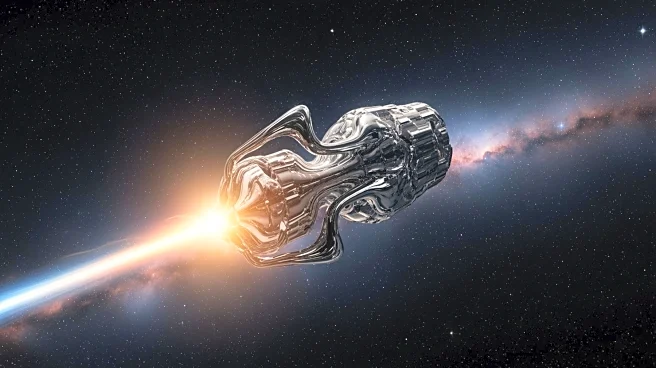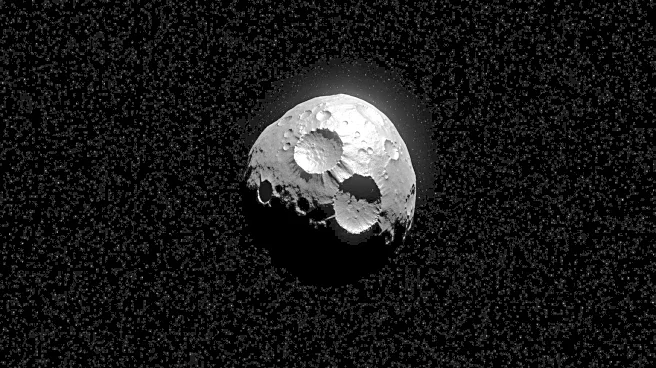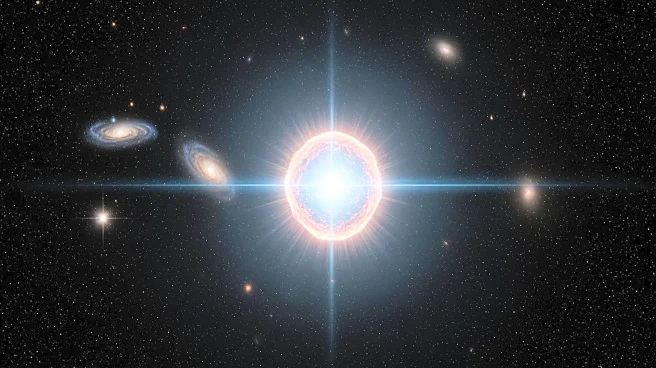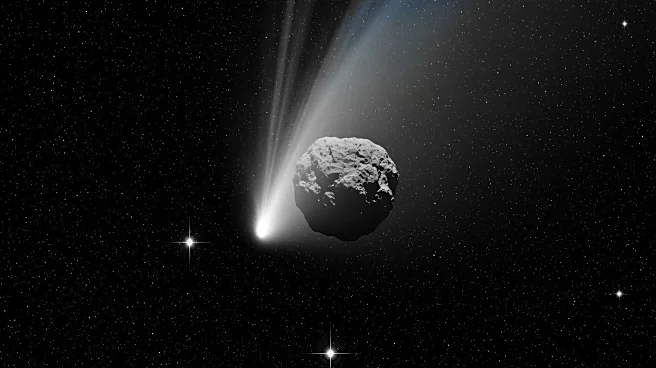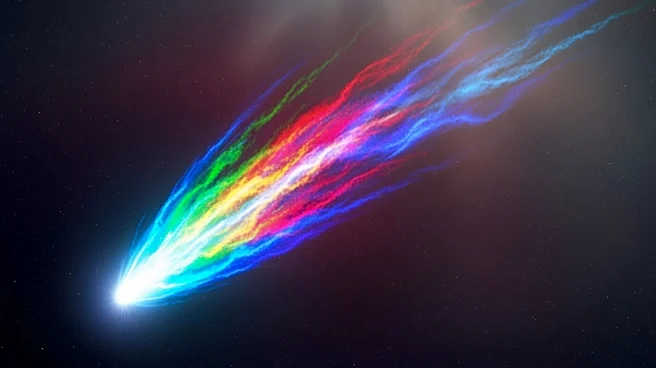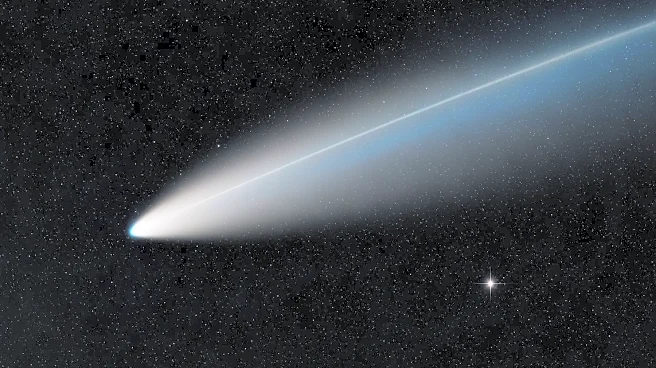What's Happening?
Recent images of the interstellar object 3I/ATLAS, taken by the R. Naves Observatory, reveal a lack of a clear cometary tail post-perihelion, which is unusual for such objects. Despite significant mass
loss during its perihelion passage, the expected cometary tail is absent. This anomaly adds to a series of unusual characteristics observed in 3I/ATLAS, including its retrograde trajectory and unique gas composition.
Why It's Important?
The peculiar behavior of 3I/ATLAS challenges existing models of cometary physics and interstellar objects. Its anomalies could provide new insights into the nature of interstellar bodies and their interactions with solar radiation. Understanding these phenomena is crucial for advancing our knowledge of the solar system and the broader universe.
Beyond the Headlines
The absence of a cometary tail, despite significant mass loss, raises questions about the physical processes governing interstellar objects. The unique characteristics of 3I/ATLAS, such as its high nickel content and retrograde orbit, suggest it may differ fundamentally from known comets. This could have implications for theories about the formation and evolution of interstellar objects.
